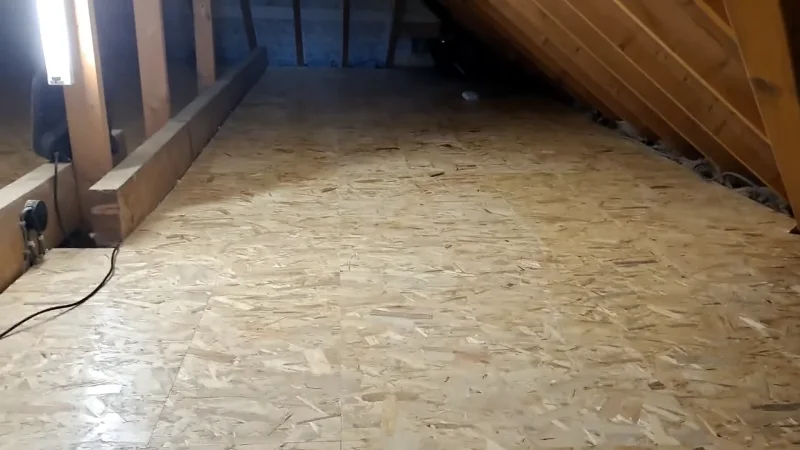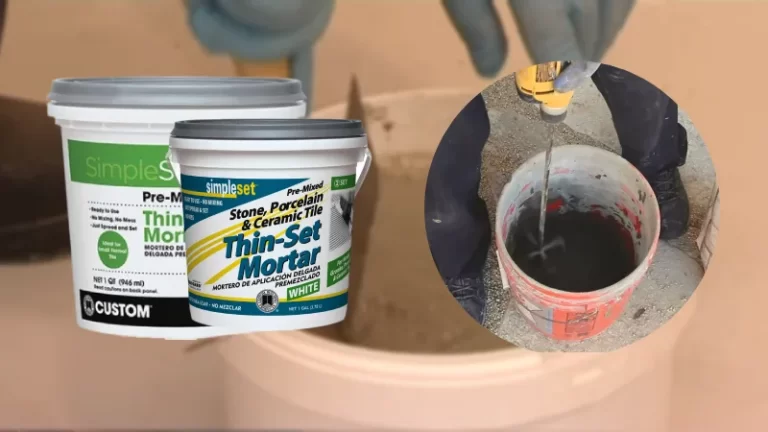Should I Use 7/16 OSB for Attic Flooring?

When choosing a flooring material for your attic, consider the intended use of the space and the characteristics of the materials. One option is 7/16 inch oriented strand board (OSB). However, as a thin and weak engineered wood panel, OSB is not always the best choice for attic flooring.
In this article, we’ll explore key considerations to decide if 7/16 OSB is suitable for your attic floor.
You'll Learn About
7/16 OSB for Attic Floor
7/16 OSB is a type of engineered wood panel commonly used as sheathing in construction. While more affordable and easier to work with than plywood, it is not recommended for attic flooring. OSB is not as strong or durable as plywood and is more prone to moisture damage. It is also less smooth and stable, making it less comfortable for walking.
If you plan to use your attic for storage or as a living space, 3/4-inch plywood is a better choice. It provides a stronger, more stable, and durable surface that can withstand added weight and activity.
Why Plywood is a Better Choice for Attic Flooring?
Plywood is generally better for attic flooring than OSB due to its superior strength and durability. OSB is made of compressed wood strands bound with adhesives. Plywood is made of thin layers of wood veneer cross-laminated and bonded with adhesives. This makes plywood more stable and resistant to warping, cracking, and splitting.
Plywood is also less prone to moisture damage. Its thin layers are less likely to swell or shrink due to humidity changes. This makes it better for attics, which can experience moisture and temperature fluctuations.
Plywood has a smooth and stable surface, making it more comfortable for walking. This is important if you plan to use your attic as a living space or for storage. While 7/16 OSB is more affordable, it is generally less suitable for attic flooring than plywood.
Factors to Consider When Choosing Attic Flooring Material
Several key factors should guide your choice of attic flooring material:
Joist Spacing and Load-bearing Capacity
The spacing and size of your attic joists determine the type and thickness of flooring material. If joists are spaced 16 inches apart or closer, use a thicker material like 3/4-inch plywood. This ensures the floor is strong and stable enough to support added weight.
Intended Use of the Attic
If you plan to use your attic for storage, a thinner material like 7/16 OSB may suffice. However, for a living space, use a stronger material like 3/4-inch plywood. This ensures the floor can withstand added weight and activity.
Budget and Cost Considerations
Flooring material costs vary, with plywood generally more expensive than OSB. While the cheaper option may be tempting, consider long-term maintenance and repair costs. Higher-quality materials can add value to your home.
How to Install 7/16 OSB for Attic Flooring Properly?
Here are tips for choosing and installing attic flooring:
Insulate the Floor
To make your attic more comfortable and energy-efficient, insulate the floor. Use loose-fill or batt insulation based on your attic’s needs. Also, consider return height.
Consider the Finish
If finishing the attic floor for use as a living space, consider the type of finish. Hardwood, laminate, and tile are popular choices. Ensure the subfloor is strong enough to support added weight and activity.
Check for Pests
Before installing flooring, check for pests like rats or termites. These can cause serious damage to your home’s structure. Address infestations before installing a new floor.
Ventilate the Attic
Proper ventilation is essential for attic health and longevity. Install systems like soffit vents and ridge vents to keep the attic dry and well-ventilated.
Follow Building Codes
Check local building codes to ensure your attic flooring meets requirements. This ensures safety and protects your home’s value.
Tips to Consider When Choosing a Flooring Material for Your Attic
Here are additional tips for choosing attic flooring:
Consider the Slope of the Roof
If your attic has a steep slope, choose a flexible material that conforms to the roof’s contours. Thinner materials like plywood or floating floor systems may work better.
Consider the Humidity Level
If your attic has high humidity, choose a moisture-resistant material. Bamboo and cork are good options as they naturally resist moisture.
Consider the Weight of the Flooring Material
If attic access is limited, choose a lighter material for easier installation.
Consider the Cost of Installation
Factor in installation costs, including tools and supplies if doing it yourself. If hiring a professional, get multiple quotes and compare prices. Consider the cost of installation.
Consider the Future Use of the Attic
Think about how you’ll use the attic in the future. If it will be a living space or storage, choose a strong and durable material. If unsure, opt for a versatile material suitable for various purposes.
Should I Use 7/16 OSB for Attic Flooring?
7/16 OSB is not recommended for attic flooring. It is primarily used for walls and roofs, not floors. Attic flooring requires a material strong enough to support furniture, boxes, and other stored items.
The recommended thickness for attic flooring is at least 3/4 inch. Plywood is better than OSB due to its higher compressional strength and moisture resistance. These qualities are important in attics with fluctuating humidity.
Overall, avoid using 7/16 OSB for attic flooring. Invest in 3/4-inch plywood for a stable and durable attic floor.
Conclusion
In conclusion, 7/16 OSB is not typically recommended for attic flooring. It is relatively weak and prone to moisture damage. While more affordable, it is not as strong or durable as plywood and is less comfortable for walking.
If you plan to use your attic as a living space or for storage, 3/4-inch plywood is a better choice. It provides a stronger, more stable, and durable surface that can withstand added weight and activity.
Ultimately, the choice of attic flooring depends on your specific needs. Carefully consider your options and choose a material suitable for your situation.

